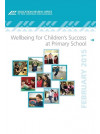This report documents the findings of ERO's evaluation of how well 159 primary schools reviewed in Term 1 2014 promoted and responded to student wellbeing.
Methodology
The overarching question for this national evaluation was ‘to what extent do schools promote and respond to student wellbeing?’.
The evaluation involved 159 primary schools that had an education review in Term 1, 2014. The type of school, roll size, and location (urban or rural) are shown in Appendix 2.
ERO’s judgement for each school was linked to ERO’s Wellbeing for Success: Draft Evaluation Indicators for Student Wellbeing 2013 and based on the:
• implementation of processes that promoted and responded to student wellbeing
• inquiry processes that informed improved responses to wellbeing across the school, including processes for individual students with high wellbeing needs
• learning, teaching and curriculum focused on improving wellbeing
• evidence of principles related to health and physical education learning areas across the school’s teaching and learning
• leaders’ promotion of, and response to, student wellbeing
• contribution to student wellbeing of school partnerships with parents and whānau, and with community health and social service providers.
Information used to make the judgement included:
• discussions with, and observing interactions among students, parents and whānau, school leaders and teachers, Special Education Needs Coordinators (SENCOs), school social workers, and school trustees
• analysis of the school’s strategic documents, including plans for curriculum, professional learning and development (PLD), care for students, response to traumatic events and minutes of meetings (especially about how the school used data about student wellbeing)
• analysis of Public Achievement Information (PAI), including National Standards achievement, stand-downs, suspensions and exclusion data.
Individual students’ wellbeing could not be guaranteed in any school at any one time. Traumatic incidents, bullying and mental and physical health problems of students or significant members of their family or whānau affected an individual’s level of wellbeingregardless of how focused a school was on student wellbeing. Whether the school was prepared for such events, and how evident the focus on student wellbeing was in the actions and documents associated with school culture, curriculum and systems, were the important factors in making a judgement about each school.

